Wet Rooms – The Next Trend in Bathroom Design?
Bathrooms have evolved far beyond mere utility. Today, they are personal sanctuaries, spaces of relaxation, and above all, a reflection of style. Enter the wet room — a popular bathroom design idea that’s opening up new and old ways to utilize and appreciate the bathroom space.
What is a Wet Room?
In essence, a wet room is a waterproofed bathroom where the shower doesn’t have to be confined within a traditional enclosure or a tray. Instead, the showering area is open to other nearby elements like a standalone tub or a seating area. The design ensures that the entire wet room area remains waterproof, offering a seamless and spacious appearance.
“Think of a wet room as a truly hassle-free shower, where accessibility of the space is of the utmost importance,” says Drury Design Assistant Designer Hamza Shahin, who designed the wet room rendered below. “A bathroom design should complement your lifestyle and make tasks like morning routines easier and more enjoyable.”
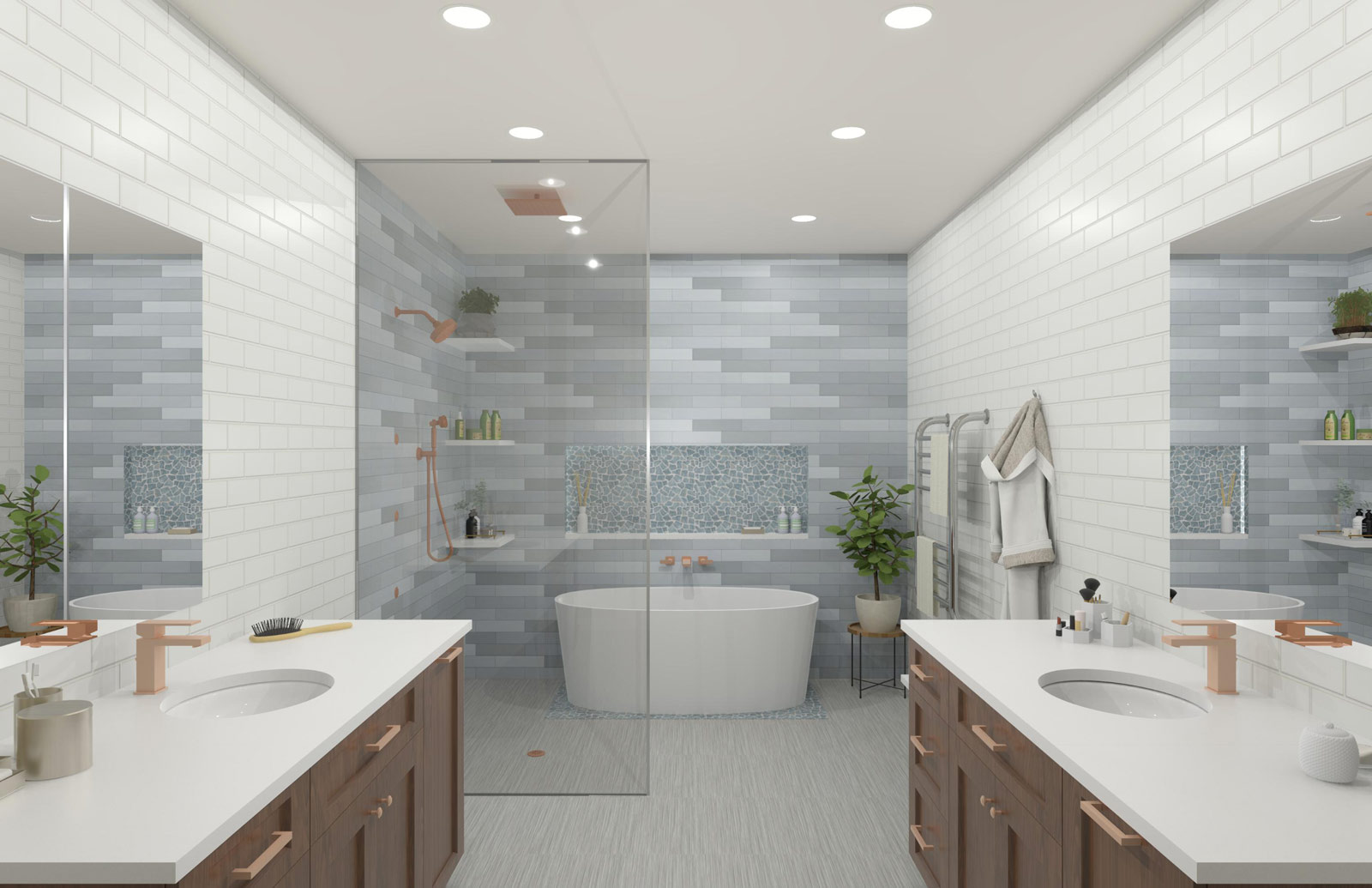
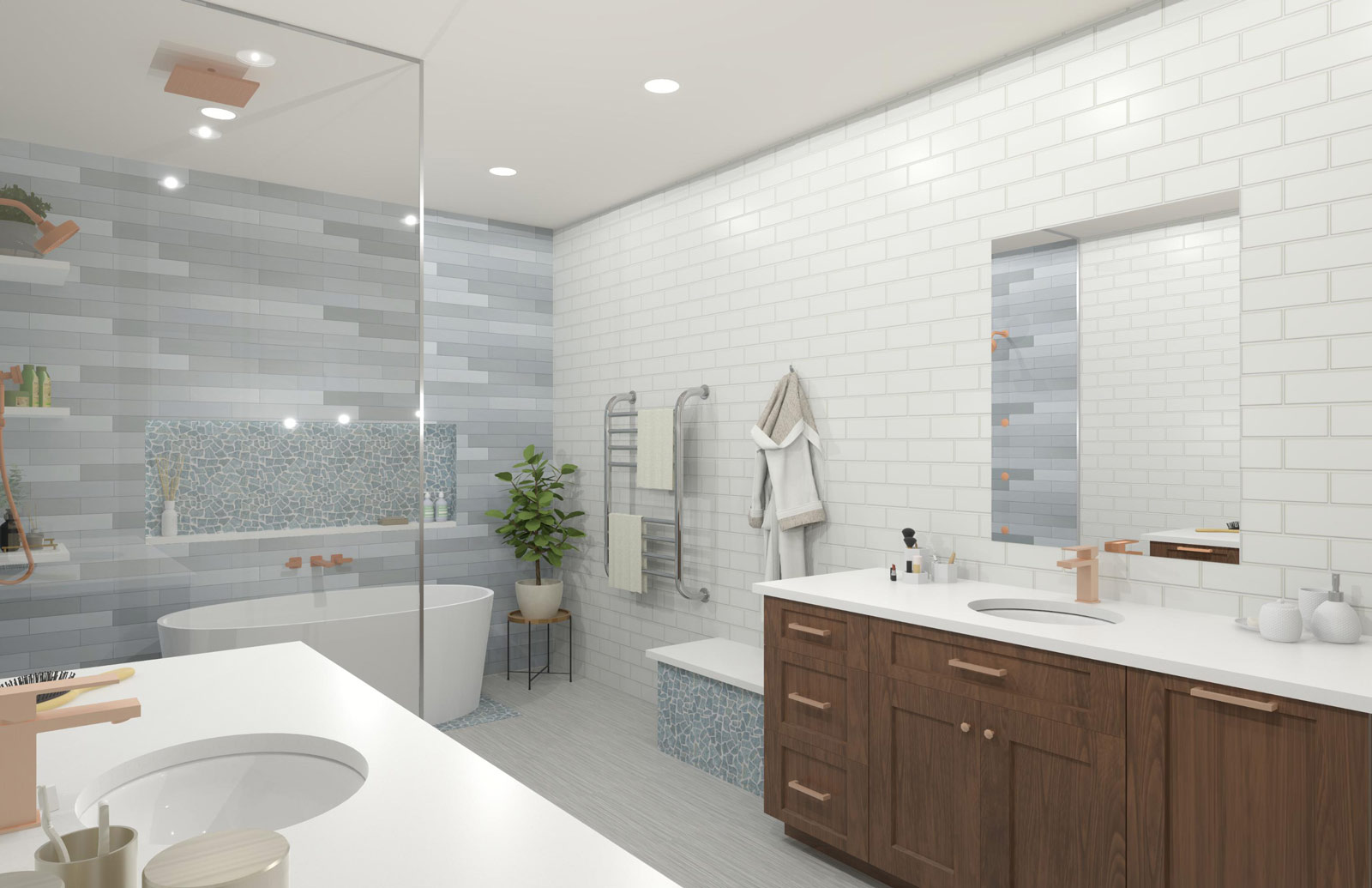
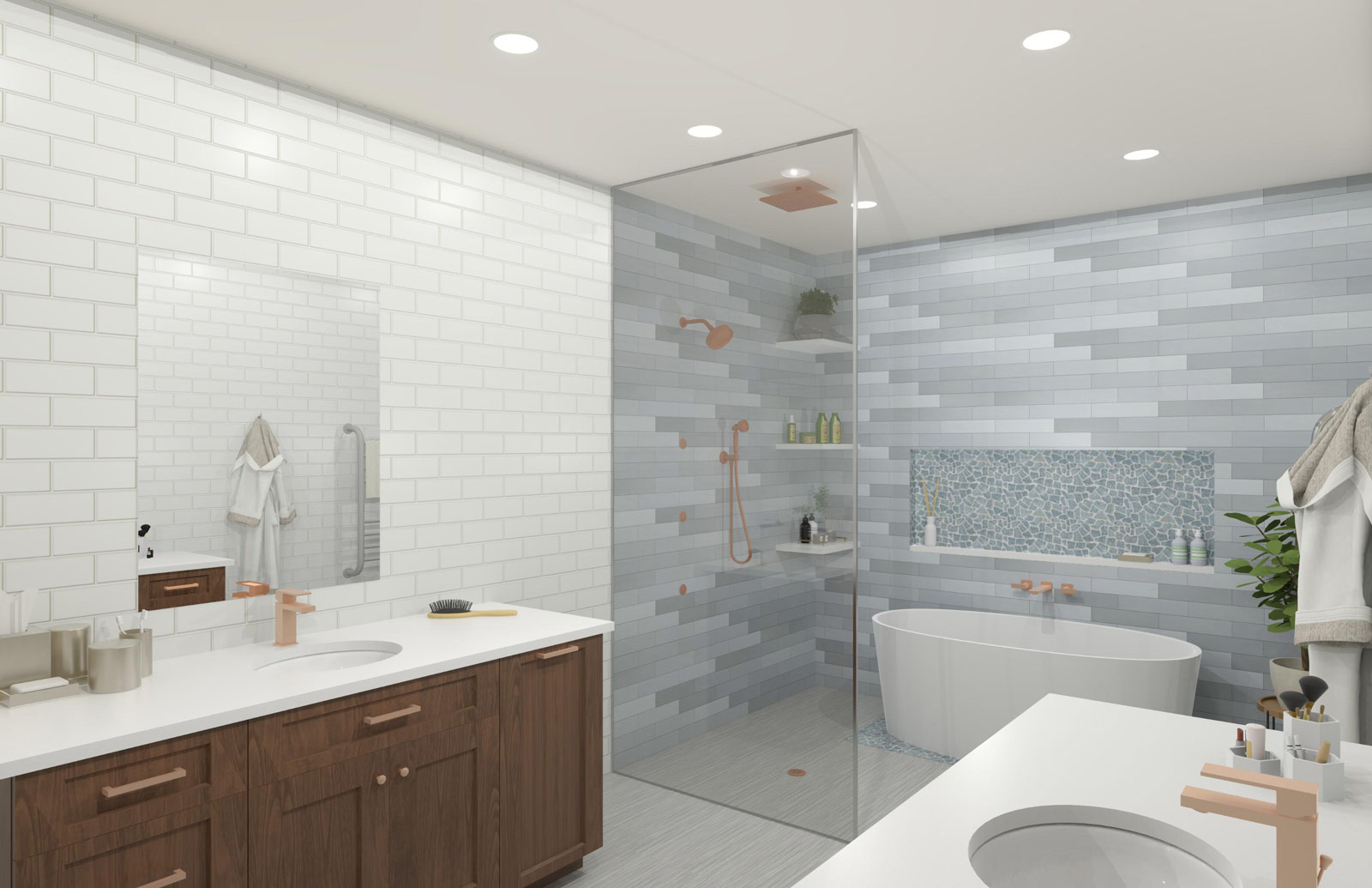
Wet rooms have been popular in Europe since the ’70s, furthering the original Japanese wet room concept of a single room that could handle everything from bathing to washing clothes. Tile was everywhere – you could splish and splash without any concerns of something getting wet that couldn’t handle it.
The American 3.0 version of a wet room draws on notions that an entire bathroom can be indeed be wet, but we might as well make the entire space visually appealing and highly functional beyond soaping up, drying off and getting out. Today’s wet rooms are designed for respite and rejuvenation. So, this could mean having a splash-ready wet section of a bathroom where one or more shower heads can be right next to, say, a freestanding tub. Splash all you want – the space is designed for it.
With spa-like functionality in mind, some designers are incorporating glass doors that can partially or fully separate and enclose a wet area. This maintains the visuals of the open-concept wet room while allowing a specific wet space within it to trap steam and function as a sauna of sorts. This is like a wet room within a bathroom, as shown below in design renderings by Assistant Designer Lauren Feurich.
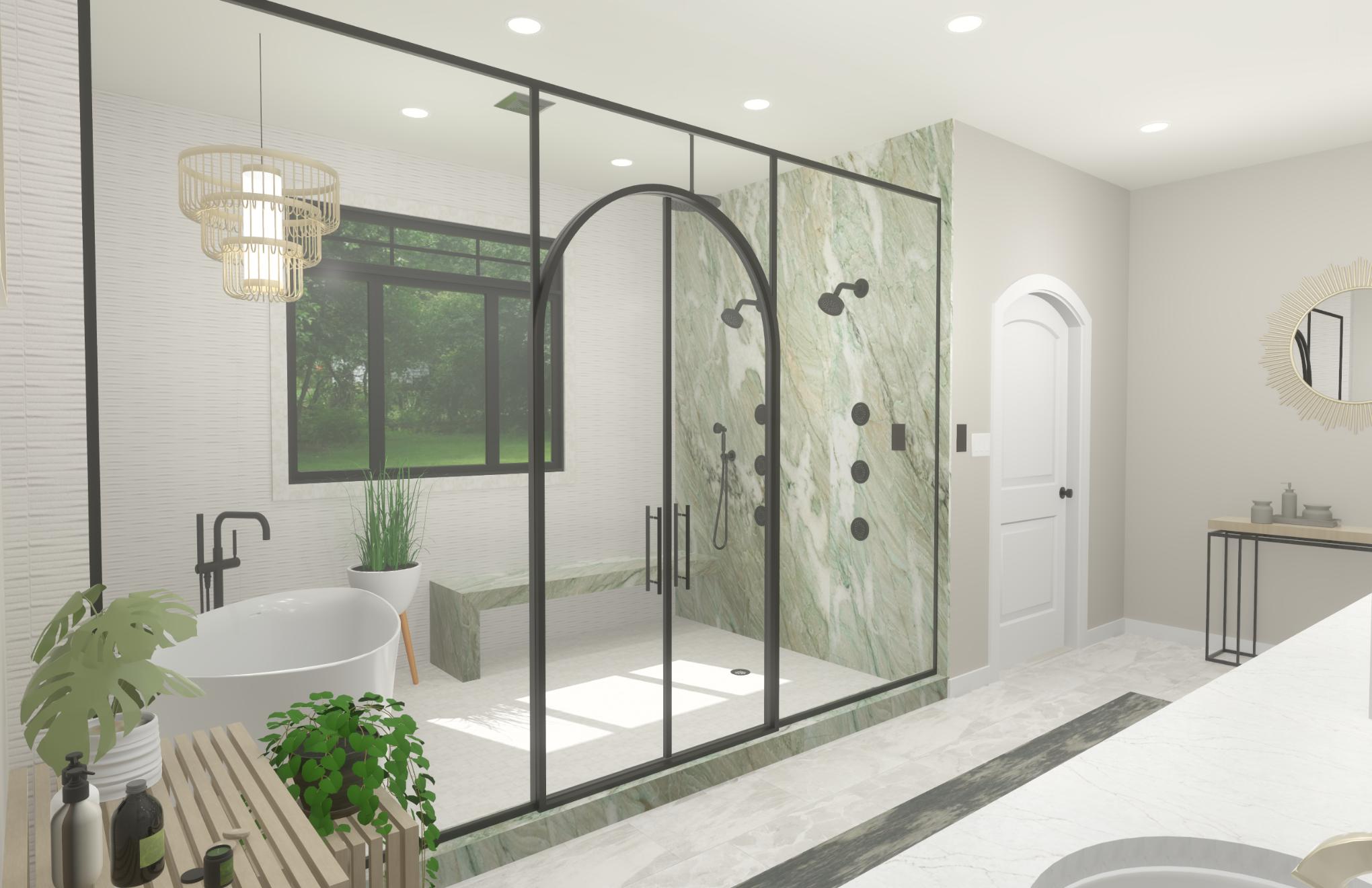
“This space feels like a day spa with it’s resort-ready luxurious materials and finishes,” Feurich says. “Note how the wet room concept is perfect for incorporating plants and the vibrancy of life. This is called biophilic design – a space that emphasizes well-being through a deeper connection with nature.”
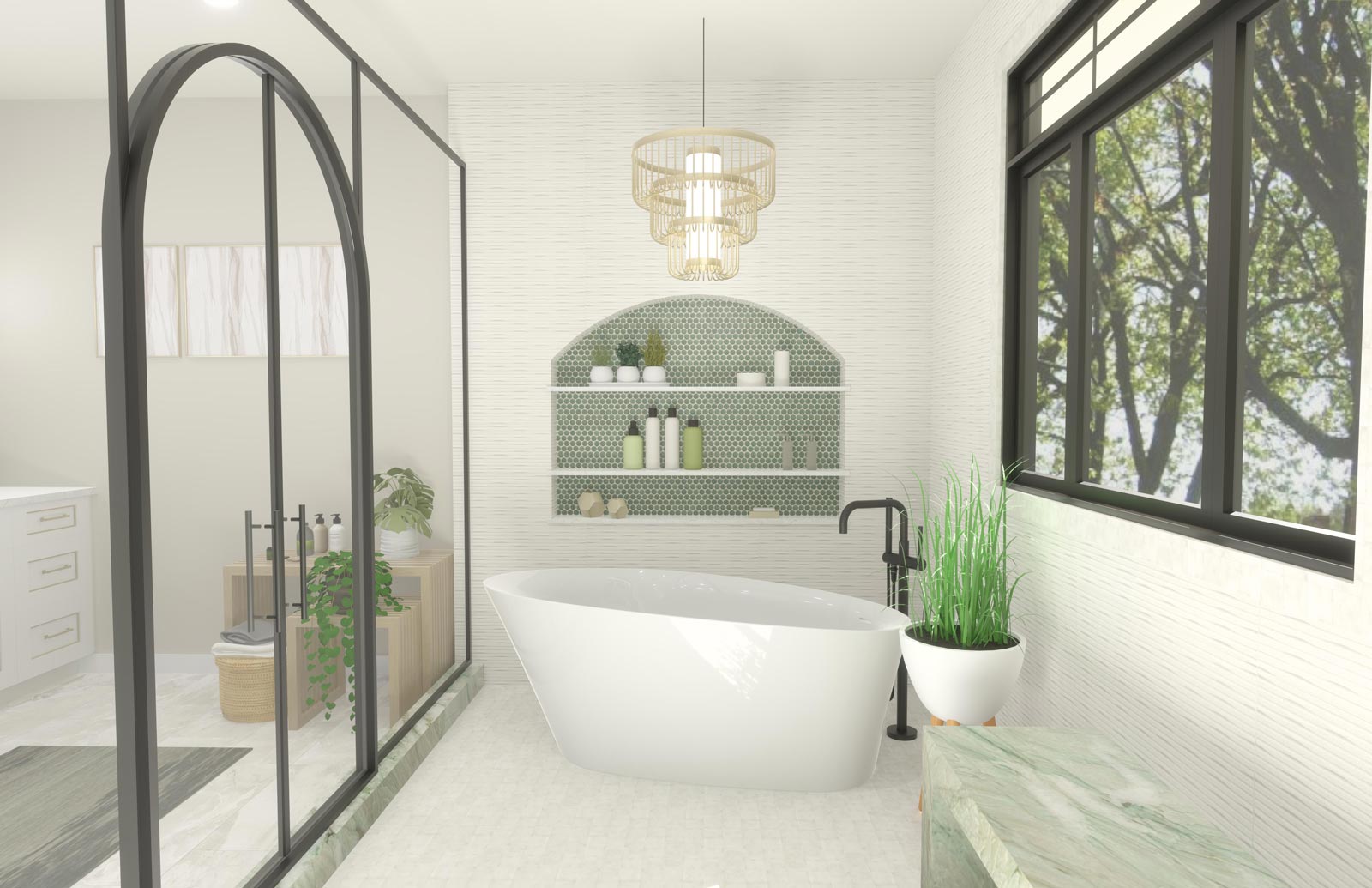
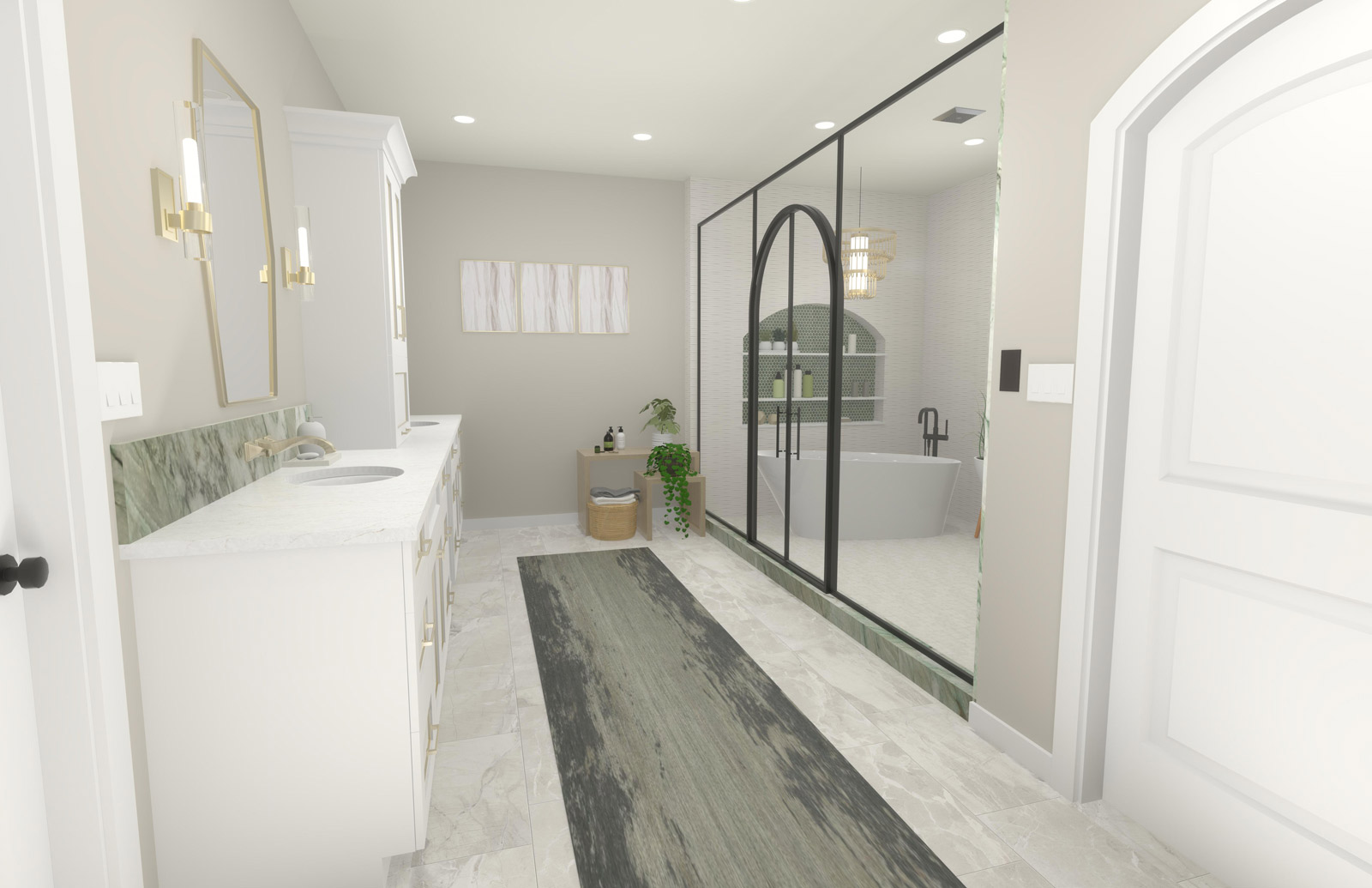
Is My Bathroom the Right Size for a Wet Room?
A common misconception is that wet rooms are only for expansive, sprawling bathrooms. The beauty of wet room design is adaptability:
Compact Bathrooms: For smaller bathrooms, a wet room can solve space problems while unlocking design possibilities. Without the need for bulky enclosures or curtains, you get to utilize more space. A wet room design can make even the coziest of spaces feel more open and spacious.
Medium Bathrooms: With a bit more room to play with, you can consider incorporating additional elements, like a freestanding bathtub or a larger vanity.
Large Bathrooms: This is where a wet room design can shift your space toward a luxury experience. Consider integrating seating areas, multiple showerheads and spa-like features for that luxury oasis vibe.
The wet room concepts below were designed with the aid of AI. If you can dream it, we can help you visualize it, literally…
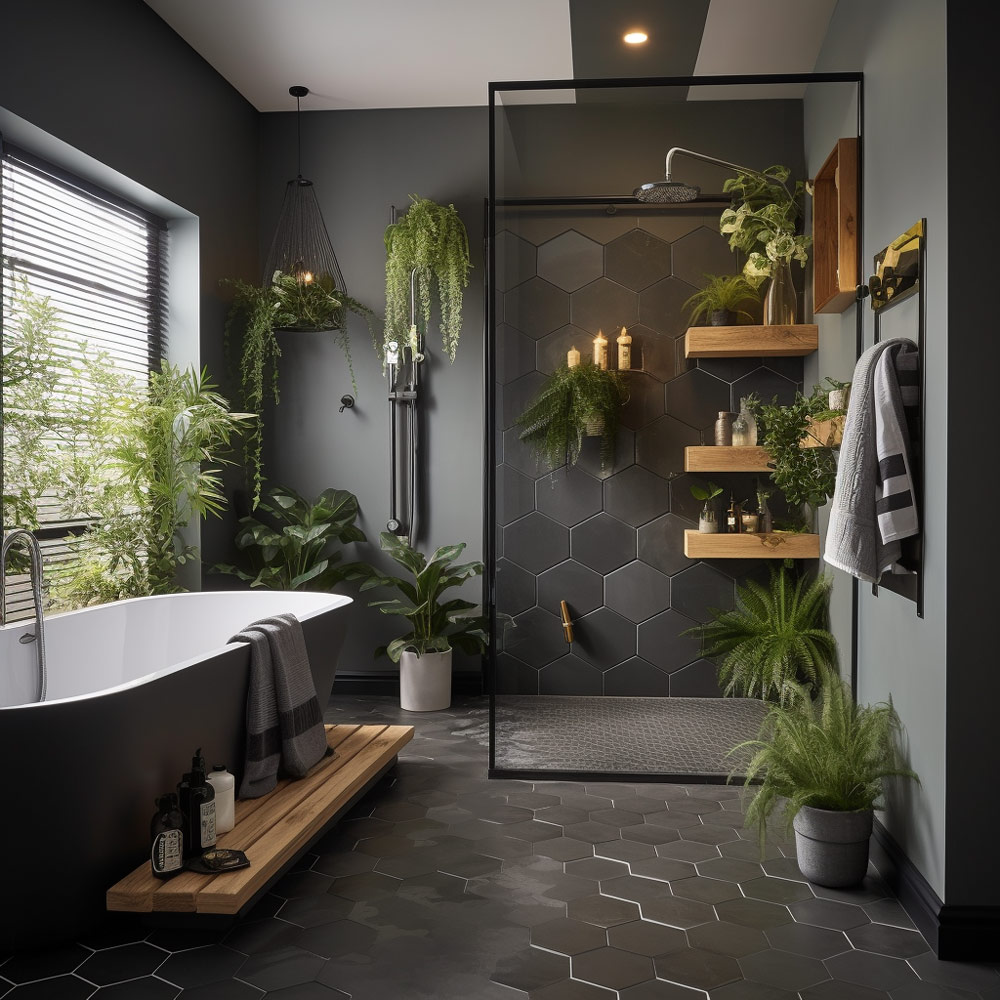
Wet Rooms Don’t Have to be Modern/Contemporary:
The versatility of wet rooms lies not just in their adaptability to space, but also in their ability to work within a wide range of design styles.
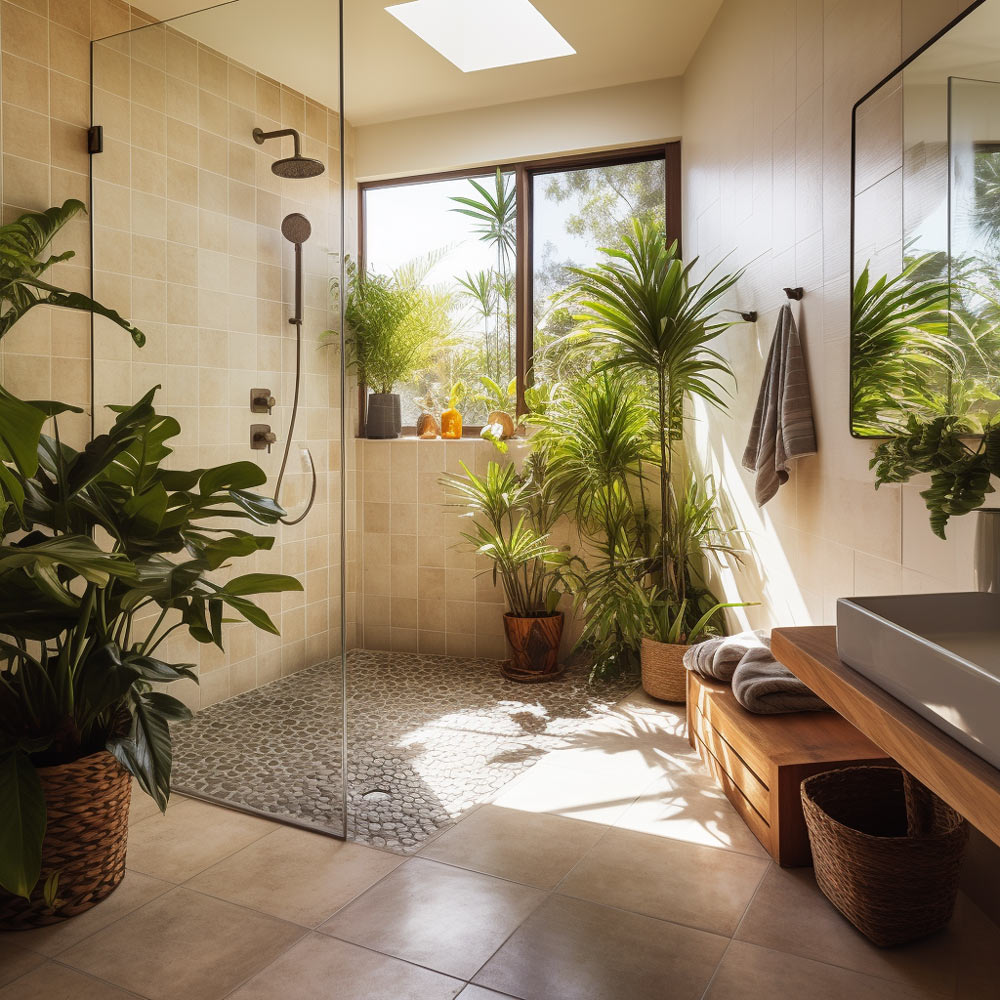
Minimalistic and Modern:
Let’s start here because the wet room concept does lend itself to modern design quite nicely. Think frameless glass panels, neutral colors, and sleek fixtures. Large tiles, often in monochrome shades, can create an illusion of even more space, while minimalist fixtures keep the look clean and contemporary.
Classical and Traditional:
Opt for vintage fittings, mosaic tiles, and wood accents. The rustic side of traditional works with wet rooms, too.
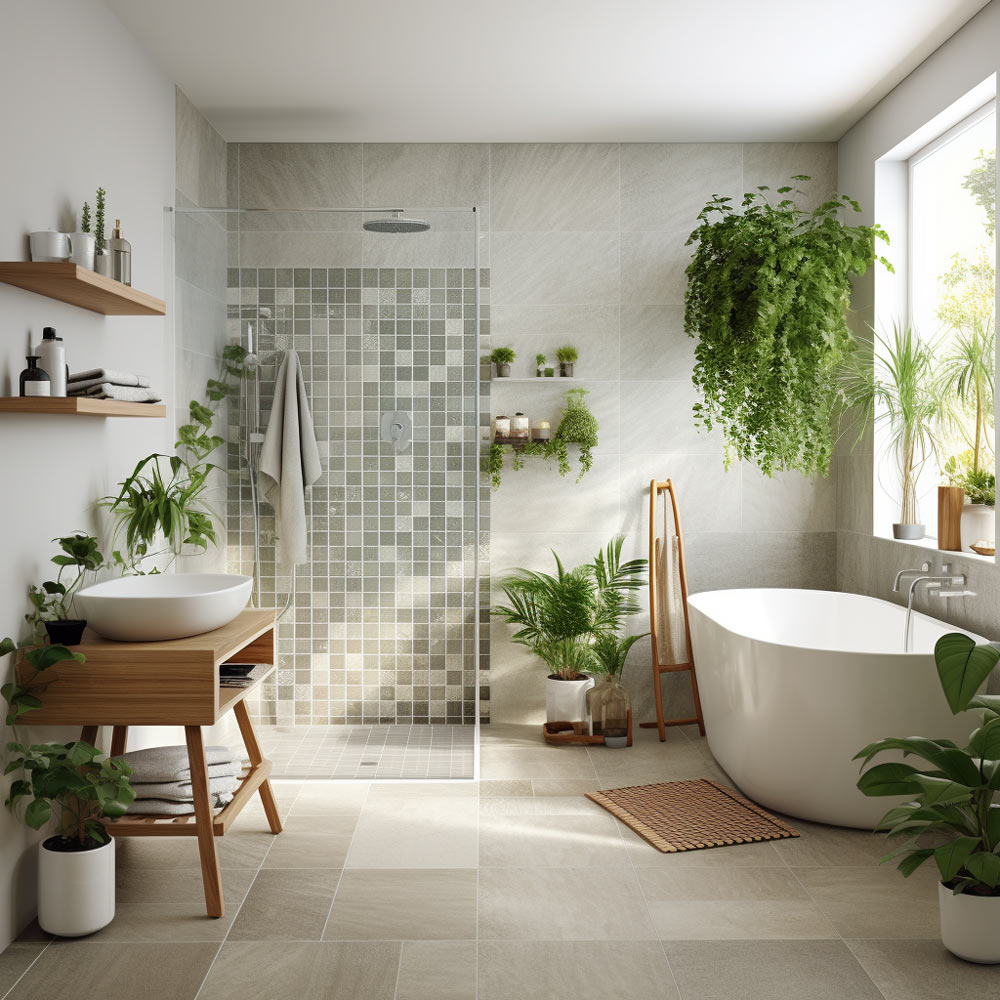
Nature-Inspired:
Bring the outside in with natural stone tiles, plants, and waterfall showerheads. This style can turn your bathroom into a calming, nature-inspired retreat.
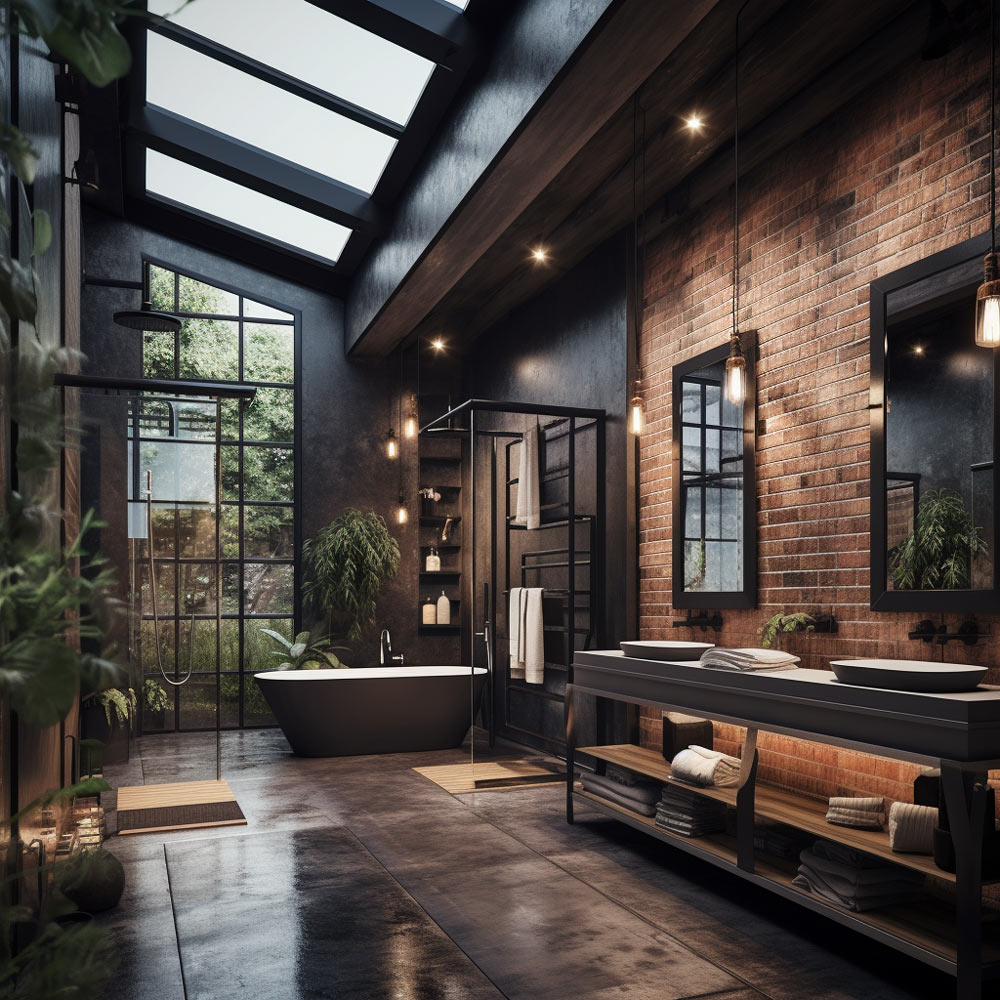
Industrial:
Exposed brick, dark metals, and concrete effects can give your wet room that urban, edgy feel associated with loft-style living.
Luxurious and Opulent:
Think marble, gold fixtures, and perhaps even a chandelier for that extra touch of glam.
Ready to dive in?
Tackling a wet room design by yourself can lead to trouble. Given the intricacies of waterproofing, drainage and safety, it’s essential to entrust this task to seasoned experts. Call us when you’re ready to talk about a bathroom remodel and whether wet room design elements are right for you. A wet room might be just the thing to take your daily rituals to the next level.
